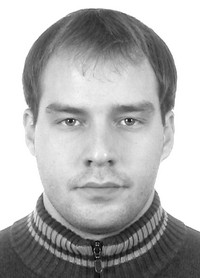Peculiarities of manifestation of peak special strength in beginner armwrestlers of various weight categories
Keywords:
armwrestling, special strength fitness, peak strength, weight categories, tensodynamometry.Abstract
Objective of the study was to identify differences between the peak special strength rates in beginner armwrestlers of various weight categories.
Methods and structure of the study. Sampled for the study were 24 athletes aged 18-25 years, with up to one year into armwrestling sport and having no sports title. All subjects were divided into three groups depending on their body weight: Group A (n=8) – 53-65 kg – light weight category, Group B (n=8) – 78-85 kg – middle weight category, Group C (n=8) – 105 kg and over – heavy weight category.
The subjects’ special strength abilities were assessed using a tensodynamometry method [4, 6]. After the warm-up, the subjects were given two attempts for every test, where only the best attempt was recorded.
Results and conclusions. The comparison of the test rates of armwrestlers of the middle and heavy weight categories showed that the greatest difference between the mean strength values, above 100%, was found in the forearm pronators, above 90% - in the forearm supinators (p<0.01), above 38% – in the shoulder extensors (p<0.01); the smallest - in the finger flexors (5.1%), supine forearm flexors (16.6%), and hand flexors (17.6%). There were no statistically significant differences between the beginner armwrestlers of the middle and heavy weight categories in the following tests: supine forearm flexion and finger flexion. The findings indicate that the difference in the special strength fitness rates in beginner armwrestlers of various weight categories is less significant than that of qualified athletes.
References
Belskiy I.V. Effective training systems: Arm wrestling. Body-building. Benchpress. Powerlifting. 2nd ed., rev., sup.. Minsk: VidaN publ., 2002. 352 p.
Voronkov A.V., Nikulin I.N., Sobyanin F.I. Control over excelling strength fitness of students practicing armwrestling. Fizicheskoe vospitanie studentov. 2014. No. 2. pp. 3–7.
Zatsiorskiy V.M. Athlete’s physical qualities: fundamentals of theory and methods of education. 4th ed.. M.: Sport publ., 2019. 200 p.
Matyushenko I.A., Nikulin I.N., Antonov A.V. et al. Model characteristics of strength of individual muscle groups of armwrestlers of different skill levels. Teoriya i praktika fiz. kultury. 2020. No. 8. pp. 19–21.
Platonov V.N. Athletes’ motor qualities and physical training of athletes. M.: Sport publ., 2019. 656 p.
Nikulin I.N., Matyushenko I.A., Antonov A.V. et al. Comparative characteristics of special strength fitness rates in armwrestlers of different weight categories and skill levels. Teoriya i praktika fiz. kultury. 2021. No. 5. pp. 9–11.
Usanov E.I., Chugina L.V. Arm wrestling with arms. Study guide. M.: RUDN publ., 2010. 298 p.
Podrihalo O.O., Podrigalo L.V., Bezkorovainyi D.О., Halashko O.I., Nikulin I.N., Kadutskaya L.A. The analysis of handgrip strength and somatotype features in arm wrestling athletes with different skill levels. Physical education of students, 2020. No 24 (2). pp. 64–70.
Stone M.H., Stone M., Sands W.A. Principles and practice of resistance training. Human Kinetics, 2007. P. 376.


